André Cymone
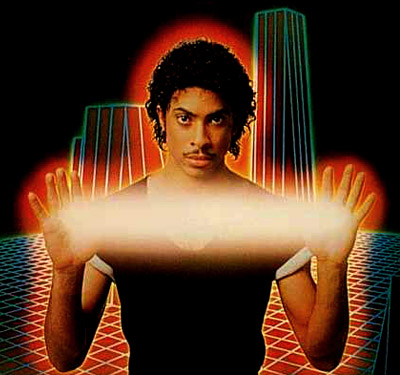
Featuring a specially commissioned interview with John ‘Bam Bam’ Morgan, drummer in André Cymone’s band, this article looks at both Cymone’s early career and some of the related groups which were in the Minneapolis scene during this time.
André Cymone was born André Simon Anderson, and his contribution to Prince’s early career should never be underestimated. They had long been friends – Cymone’s father had played bass in Prince’s father’s band – and after running away from home at age 12, Prince moved into the Anderson’s family home. Prince and Cymone would practice playing their instruments in the basement for hours; Cymone’s mother recalled, “It sounded like a lot of noise, but after the first couple of years I realized the seriousness of it. Girls were crazy about them”. In 1972, Prince’s cousin, Charles Smith, invited them both to play in his band, with Prince on guitar and Cymone on bass, and Smith noted how they had already developed a twin-like sixth sense when playing together. Cymone’s sister Linda Anderson soon joined on keyboards, and with Terry Jackson and William Doughty on percussion the band Grand Central was formed.

Grand Central: (clockwise from left) Morris Day, William Doughty, André Cymone, Linda Anderson
By the time Prince started high school in 1973, Smith had left and Prince replaced him with drummer Morris Day. The “uptown” Minneapolis scene was starting to generate heat and included rival bands like Flyte Time (consisting of Jimmy Jam, Terry Lewis, Jellybean Johnson, Monte Moir and vocalist Cynthia Johnson) and The Family. Unrelated to Prince’s future side project of the same name, The Family was bassist Sonny Thompson’s group, and Prince and Cymone would jam with him at his home, improving their techniques. The local scene was largely improvised; Linda Anderson recalls, “We just made our own gigs. We would go around and just play in neighborhoods, set up our equipment in the park and play, and have people gather round”. Grand Central soon attracted the attentions of a Brooklyn-based musican called Pepé Willie, and when he moved to Minneapolis he worked with the band to improve their sound. At the same time, Willie was working on material for his own band, 94 East, and invited Prince to perform on the recordings.
In 1976, Prince, who was already recognised as a precocious talent, was interviewed in his high school magazine and he bemoaned the lack of studios and record companies in the Minneapolis area, saying “I really feel that if we would have lived in Los Angeles or New York or some other big city, we would have gotten over by now”. A couple of months later, Willie took his 94 East recordings to New York and he signed a one-off single deal with Polydor. By this time, Bobby Z had joined the band on drums (he would later be in Prince’s band, The Revolution) and André Cymone on bass. Polydor brought in vocalist Colonel Abrams and two songs were recorded, ‘Fortune Seller’ and ’10:15’. However, due to a number of problems, the contract was cancelled and those two songs weren’t completed. Returning to Minneapolis, Willie, Prince and Cymone set to work on some new recordings, but these only found release in instrumental form in 1985 on Hot Pink Records, once Prince had achieved solo success.
By 1977, Prince was working more and more on his own, and Grand Central (which by this time had been renamed Champagne) disbanded before the group had made any professional recordings. After the critical success but commercial disappointment of his debut album for Warner Bros, Prince brought back Cymone to play on bass; Cymone was an important contributor on a number of songs on the follow-up album ‘Prince’ and in the sleeve credits Prince refers to both Bobby Z and André Cymone as “heaven-sent”. Additional members of Prince’s band were Gayle Chapman and Matt Fink on keyboards, and Dez Dickerson on guitar. They had their first show in 1979 at the Capri Theatre in Minneapolis, but Prince hadn’t yet developed into the unstoppable showman, and it was Dickerson and Cymone who worked the crowd.
Prince’s manager at the time, Owen Husney, recalled in an interview for Billboard magazine that he, Prince and Cymone used to stay up all night working out the gameplan that would eventually lead to the ‘Dirty Mind’ album. Prince and Cymone also began making plans for a side group that would have more of an R&B sound, leaving Prince free to explore other musical styles for his own albums. They approached the Flyte Time members about making up this new band, The Time. Flyte Time’s vocalist was now Alexander O’Neal, but he dropped out of the plans over pay disputes. In the meantime, Morris Day had joined a group called Enterprise, which featured Sue Ann Carwell on vocals. Carwell was friends with Prince, Cymone and Flyte Time, and even though Prince and Carwell made no recordings together she is often referred to as “Prince’s first protégée”. Carwell auditioned for lead vocalist with The Time, but Day had given Prince an Enterprise track called ‘Partyup’ for the ‘Dirty Mind’ album and in return Prince offered Day the frontman role. Day suggested two other Enterprise members join the new group, guitarist Jesse Johnson and hype-man Jerome Benton.

Sue Ann Carwell performing with Terry Lewis in Flyte Time
Carwell moved to Los Angeles where she worked on her debut solo album, produced by Pete Bellotte who had recently worked with Giorgio Moroder for Donna Summer. When Carwell returned to Minneapolis she regrouped Enterprise, replacing drummer Morris Day with first, Rocky Harris and then, John Morgan. Morgan recalls, “One day I got a call from Sue Ann – she said in an excited voice, “Pack your drums and get your ass to the Met Center, we’re opening tonight for Prince and The Time”. I just about had a heart attack. This was Prince’s ‘Controversy’ tour… that venue was huge! It was my first big arena and, man was I nervous. I got to start the entire concert out by myself and Prince was running the soundboard. The Enterprise keyboardist Maridi Holmes has this video tape of us… I wish I could locate him”.

John Morgan in Enterprise
By 1981, Cymone had become increasingly frustrated by the lack of recognition his contributions were getting and felt pushed out of the The Time project, and he eventually left Prince’s band to begin working on a solo career. Cymone wanted to distance himself from Prince musically and decided to embrace the futuristic electronics of new wave. Cymone signed with Columbia Records (who had initially turned down Prince) and was able to convince Columbia to give him the same creative freedoms that Prince had obtained from Warner Bros. Cymone’s first self-produced and -performed album came out in early 1982, entitled ‘Livin In The New Wave’.
However, there was still some bad feeling between Prince and Cymone, and the a-side of The Time’s second album, ‘What Time Is It’, which was recorded later that year, ends with the vocals, “We don’t like new wave” followed by laughing – this was a direct dig at André Cymone. It wasn’t until three years later that Prince and Cymone would patch things up, with Prince going up to Cymone in a nightclub and offering him the track, ‘The Dance Electric’.
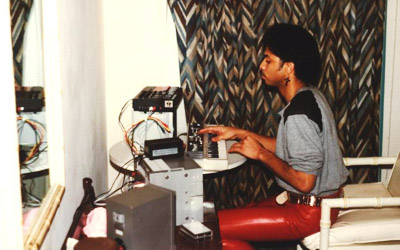
André Cymone
Morgan continues, “In the summer of 1982, Enterprise was asked to open for The Dazz Band at the Guthrie Theater, and it was after that show that things changed for me. Sue Ann told me that André had been in the audience and when I asked about him she expressed how talented he was. When Enterprise disbanded, word got back to me that André was interested in having me try out for his new band”. Cymone’s band featured two of his cousins, Jua and Bobby Dean, plus Craig Thomas and Linda Anderson. “I drove to his mother’s house and I could hear them jamming in the basement. I introduced myself and André said something like, “Let’s just jam and feel each other out”. Man, I started a beat and we must have jammed on that for 45 minutes.”
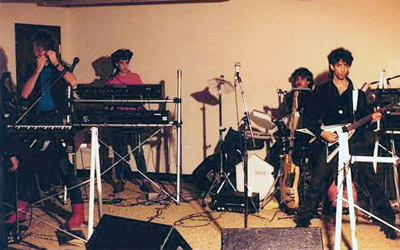
The André Cymone band in rehearsal
“Bobby Dean and I became very tight; I always thought he was a fantastic person. Jua on bass had his photo taken for the ‘Survivin’ in the 80’s’ album; Jua and I locked and we would always jam before the band would start rehearsal. But soon after that photo session he was replaced by Tim Bradley on keys. To this day, Tim and I are still good friends; I always loved the fact he had a jazz background.

Tim Bradley

Craig Thomas
“André wanted the new wave electric sound so everybody had Oberheim keyboards and he purchased two Simmons drum sets for me. I had pads all around me. I remember beating them so hard, my hands would bleed. I kept destroying those drums, left and right, breaking everything. One day André said, “Damn bro’, you’re destroying everything, you’re costing me a fortune. I have to come up with a name for you”. He did… he was the person to name me Bam Bam. I love that name.

John ‘Bam Bam’ Morgan
“Most of the time André and Craig Thomas would compose the new material but on a couple of occasions we played as a band, creating ideas.” André Cymone’s band recorded at the American Artists Studio in Minneapolis, and Owen Husney, who was no longer managing Prince, had an office in the same building and was now Cymone’s manager. (Husney also managed Jesse Johnson and Sue Ann Carwell.)
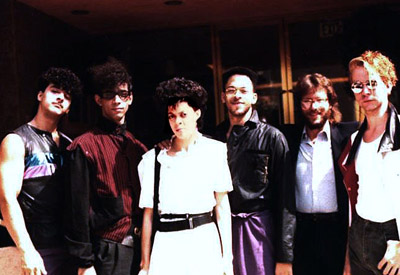
Owen Husney (second from right) with the André Cymone band: John ‘Bam Bam’ Morgan, Bobby Dean, Linda Anderson, Tim Bradley, Craig Thomas
“Not long after the release of André’s second LP, he announced we were all flying to Los Angeles to start production on a music video at Universal Studios. The video producer in charge had just finished Michael Jackson’s ‘Billy Jean’ video so we were honoured.” The video was for ‘What Are We Doing Here’ and was used as promotion for the album; it followed ‘Billy Jean’ as one of the first videos by a black artist to be shown on MTV.

André Cymone filming the ‘What Are We Doing Here’ video

Linda Anderson

André Cymone & The Wave on the set of ‘What Are We Doing Here’
“We kicked off the André Cymone US tour in February 1984, with sound man Clayton Hughes and stagehand Dave Sawyer. I remember one gig in Tampa was really humid… in fact so humid it malfunctioned our electronic sequencing system. It was a disaster, but we managed to hold things together and finish the gig. We ended the tour in our home town of Minneapolis at the club First Avenue. I remember André saying that Prince and The Time were in the audience… man, was I nervous. The club videotaped that night and I’m grateful they did – I ended up with that tape.” First Avenue is the club featured in the film Purple Rain. “That was actually my first time to ever play there so it meant a lot to me.” The first song from the set was ‘Everything’, which was only ever recorded as an instrumental.

André Cymone & The Wave: (back, left to right) André Cymone, John ‘Bam Bam’ Morgan, Linda Anderson, Bobby Dean, Tim Bradley; (front) Craig Thomas

André Cymone & The Wave performing in Tampa, Florida
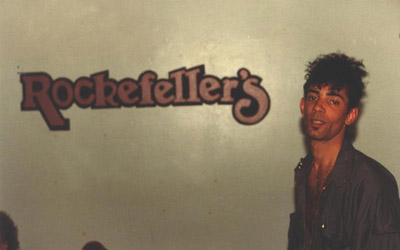
Bobby Dean
“We also had a side project… a girl group named The Girls (Sheila Rankin, Germain Brooks and Doris Rhodes) which was more of a funk project.” Hoping to emulate the success of Prince’s girl group, Vanity 6, Cymone signed The Girls to Columbia in 1983 and the following year their album, ‘Girl Talk’, was released. Cymone wrote and produced the whole album but, despite some hot tracks, sales were disappointing and the project was short-lived. The track below is an unreleased version of the single, ‘Don’t Waste My Time’, and is kindly given to us by Bam Bam.

The Girls: (left to right) Sheila Rankin, Germain Brooks, Doris Rhodes
After three albums the André Cymone band broke up; Tim Bradley joined Jesse Johnson’s band and can be heard on Johnson’s first two albums, and Bam Bam became a much sought-after drummer. When Dez Dickerson left The Revolution and began forming his own band he asked Bam Bam to join him. “Dez is one seriously truly great soul. He’s intelligent, hip, warm-hearted and spiritual. I have tons of respect for that man.” But Bam Bam went on to join The Players (which featured St. Paul Peterson before he became vocalist in another of Prince’s side projects, The Family) and one of Jesse Johnson’s side projects, Ta Mara & The Seen. Bam Bam was also asked to join Mazarati; “I was asked to be their drummer back when that band was first an idea… this was Mark Brown’s side band project”. Mark Brown (aka Brownmark) had replaced Cymone as bassist in Prince’s band. “Everybody had a side project… Jesse Johnson also produced an album for Sue Ann around 1988 called ‘Blue Velvet’, and he had another group called Dá Krash with Robert Jordan on vocals.” All these groups gave the Minneapolis scene an enviable reputation as the hotbed of US funk.

Unknown Minneapolis DJ at the Taste Show Lounge
Cymone continued to work on other projects; he had already written and produced several songs for Evelyn ‘Champagne’ King, and he went on to achieve great success producing for several other artists including Jody Watley (whom he married) and Jermaine Stewart. Cymone was a key figure in bringing new electronics to funk and R&B, and ought to rank alongside groups like The System in pioneering a more futuristic sound. Morgan concludes, “People have always asked one question which I would like to finally give an answer to; on the ‘Survivin’ In The 80’s’ album, there is a song named M.O.T.F. and people ask me if that means something. The answer is yes – Man Of The Future”.

Photos of Grand Central, Flyte Time and the unknown DJ by Charles Chamblis, courtesy of the Minnesota Historical Society. All other photos by Tim Bradley, courtesy of John ‘Bam Bam’ Morgan… thanks guys.
Posted by Manny Z
Related Entries:
The Girls
Dez Dickerson
‘Modernaire’
The Rebels
‘If The Kid Can’t Make You Come’
About this entry
You’re currently reading “André Cymone,” an entry on Those City Nights
- Published:
- March 24, 2008 / 3:03 am
- Category:
- Funk, Interviews
- Tags:
- Minneapolis, Prince
27 Comments
Jump to comment form | comment rss [?] | trackback uri [?]